
Volkswagen Brazil faces $46.5m fine over modern slavery
German car manufacturer Volkswagen has been handed a massive fine in Brazil over allegations of modern slavery on an Amazonian farm during the country’s military dictatorship.
A labour court, in the Amazonian state of Pará, on Friday ordered VW’s Brazilian subsidiary to pay compensation of 165 million reais ($A46.5 million) over the illegal exploitation of workers in the 1970s and 1980s, the Brazilian public prosecutor’s office for labour said.
According to the office, the fine is the highest ever imposed in Brazil for modern slave labour.
The VW subsidiary has announced it will appeal the decision.
“With a 72-year tradition, the company consistently upholds the principles of human dignity and strictly adheres to all applicable labour laws and regulations,” said Volkswagen do Brasil.
The allegations relate to conditions at the Fazenda Vale do Rio Cristalino farm, which belonged to a subsidiary of Volkswagen do Brasil.
The cattle farm was founded with the support of the military dictatorship as part of a national strategy to develop and colonise the Amazon region.
The investigation began in 2019 after priest Ricardo Rezende, then regional coordinator of the Rural Pastoral Commission, documented the case.
An out-of-court settlement failed in 2023.
As a result, the company was finally sued in December 2024.
According to the allegations, hundreds of temporary workers at the farm, also known as Fazenda Volkswagen, were subjected to long working days and degrading working conditions.
Armed guards and a system of debt bondage prevented the workers from leaving the farm, investigators said.

Indonesia’s president cancels China trip amid protests
Indonesian President Prabowo Subianto has cancelled a planned trip to China, as days of protests spread further outside the capital Jakarta, with several regional parliament buildings set ablaze.
Prabowo had been due to attend a Victory Day parade in China on September 3 to mark the 80th anniversary of the end of the Second World War, following Japan’s formal surrender.
The protests, the first major test for Prabowo’s nearly year-old government, began in Jakarta this week over lawmakers’ pay and worsened after a police vehicle hit and killed a motorcycle rider.
“The president wants to continue monitoring (the situation in Indonesia) directly…and seek the best solutions,” presidential spokesperson Prasetyo Hadi said in a video statement on Saturday.
“Therefore, the president apologises to the Chinese government that he could not attend.”
Another consideration in cancelling the trip was a United Nations General Assembly session in September, Prasetyo said.
In the light of the protest, short-video app TikTok, which is owned by China’s ByteDance, said on Saturday it had suspended its live feature in Indonesia for a few days.
Jakarta had this week summoned representatives of social media platforms, including Meta Platforms Inc and TikTok, and told them to boost content moderation because disinformation had spread online.
The government says that such disinformation has spurred protests against it.
Earlier on Saturday, protesters caused fires at regional parliament buildings in three provinces – West Nusa Tenggara, Pekalongan city in Central Java and Cirebon city in West Java, local media reported.
Local media Detik said protesters had looted parliamentary office equipment in Cirebon.

Police fired tear gas to disperse protesters in Pekalongan and West Nusa Tenggara.
Three people were killed on Friday in an arson attack on a parliament building in Makassar, the capital of South Sulawesi province, Indonesia’s disaster management agency said.
State news agency Antara said the victims had been trapped in the burning building, and the disaster management agency said two people were injured after jumping out of the building to escape the fire.
Local media outlet Metro TV News reported one further death from a fire at the Makassar parliamentary building. This could not be independently confirmed.
Protests also occurred on the holiday island of Bali, where tear gas was used against protesters.
Local media also reported that a crowd had looted the Jakarta home of Ahmad Sahroni, a lawmaker from the political party NasDem, and taken items including household furniture.
Sahroni has faced accusations of responding insensitively to people calling for parliament to be dissolved amid anger over lawmakers’ allowances.
Sahroni has labelled such critics “the stupidest people in the world”.
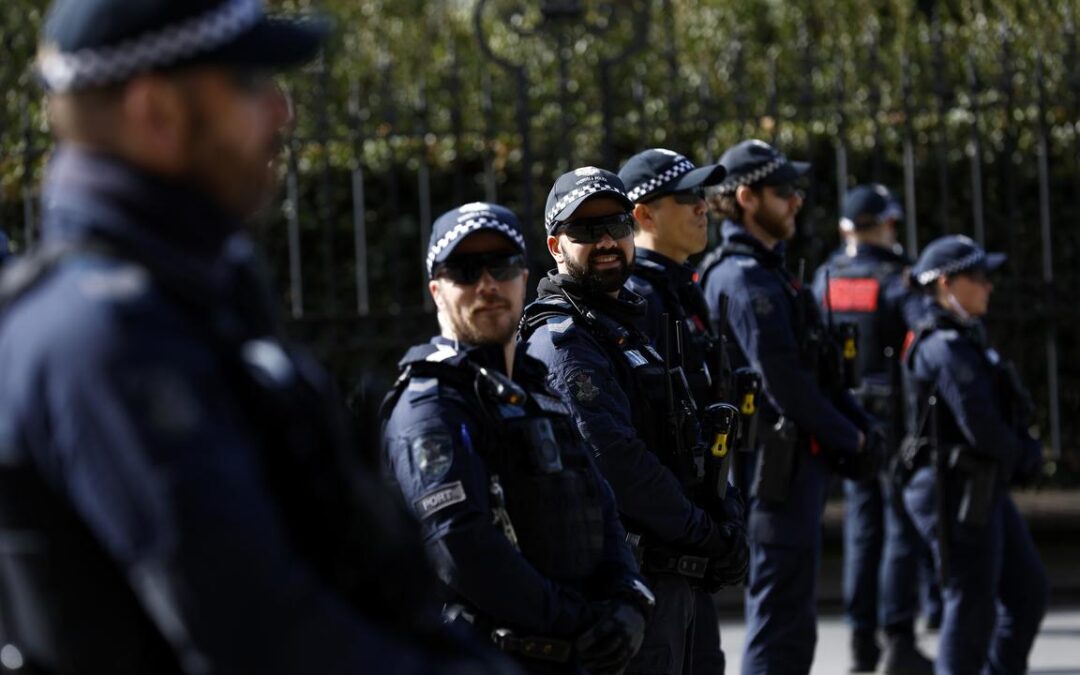
Threat warning lingers over anti-migrant rallies
Potential clashes between anti-racism and anti-immigration rallies pose the risk of a wider escalation of violence and social upheaval, according to a leading expert on terrorism.
The nation’s leaders have rushed to condemn protests linked to white-nationalist extremists planned for capital cities on Sunday.
March for Australia, the group behind the demonstrations, says they will demand the federal government brings and end to “mass migration”.
Michael Zekulin, a terrorism researcher at the Australian National University, warns violence could erupt if people started identifying with one group at the expense of others in the community.
“This is where things can become potentially dangerous when you have individuals who are sort of espousing or blaming other groups for the problems of their group,” he told AAP.
“If that starts to get out of hand, if there are confrontations, that can sort of feed into larger things as they pick up more momentum.”

Anti-racism marches will also be taking place at the same time in Sydney and Melbourne that could see the rival groups come head-to-head.
NSW Police will be sending up to 1000 officers to patrol parts of the inner-city, while Victoria Police will declare the Melbourne CBD a designated area, allowing people to be searched for weapons and be asked to remove face coverings.
Dr Zekulin said social media had played a role in encouraging copy-cat behaviour among extremist groups.
“It’s very clear that these individuals travel in the same circles on the internet,” he said.
“They see each other, they see what other groups who have similar beliefs to them are doing, and then they will try to imitate or mimic that.”
Indian migrant workers have expressed fears they will be targeted by protesters at the anti-migration rallies.
The Albanese government has declared there is no place for hate in Australia.
While the coalition has called for unity and respect for diverse communities, hitting out at reports particular non-white ethnic groups might be targeted.

Opposition Leader Sussan Ley on Saturday urged calm and respectful behaviour as part of Australians’ right to protest.
”Whether incited from afar or stirred up here, we cannot let hatred and fear tear at our social cohesion,” she said.
“Strong borders keep us safe but they also allow us to be generous and compassionate to those fleeing conflict.That is the Australian story.”
Greens Immigration spokesperson David Shoebridge said anti-migrant rhetoric inside parliament house and in the media had fed into extremist views.
“We are in solidarity with every community that is targeted and concerned by these hateful rallies,” he said.
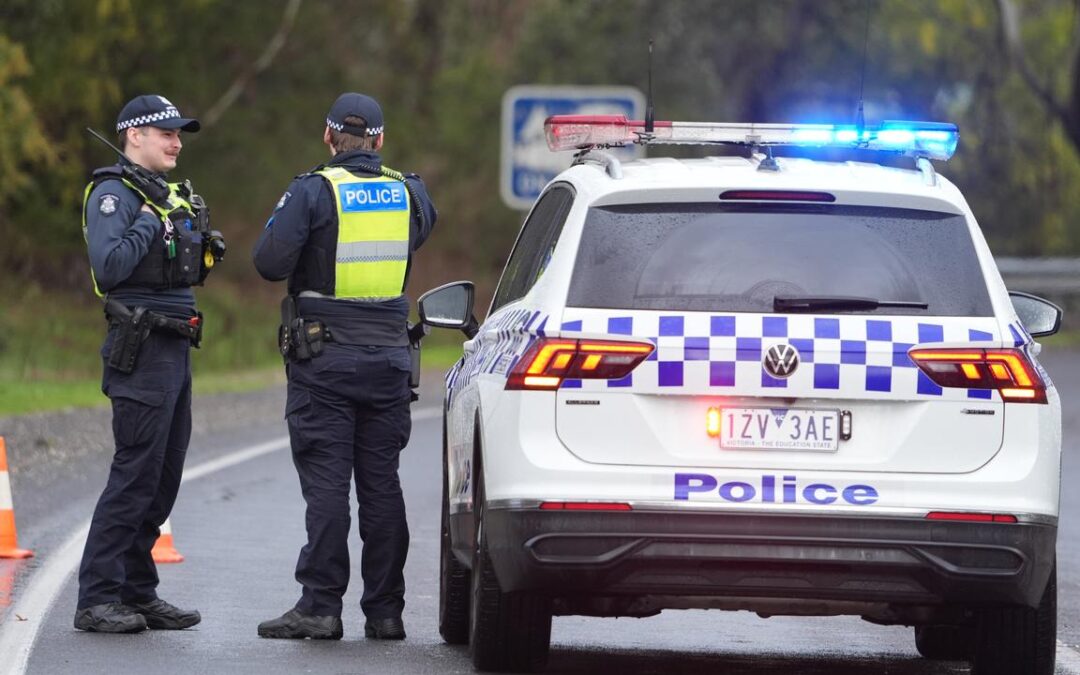
Man arrested in alpine hunt for accused cop killer
A 61-year-man has been arrested and interviewed by detectives investigating the whereabouts of a dangerous fugitive accused of killing two police officers.
The hunt for alleged gunman Dezi Freeman is in its fifth day with hundreds of police continuing to scour Victoria’s high country wilderness amid strong winds and chilly conditions.
Freeman, 56, fled into the bush on Tuesday following a fatal confrontation at a property in Porepunkah, about 300km northeast of Melbourne.

Victoria Police say they have arrested a man at a property in Bright, about 6km from Porepunkah.
The arrest follows the execution of a search warrant about 4.45pm on Friday, in which guns and cannabis were seized from the home.
The man was being interviewed by investigators on Saturday afternoon.
When asked whether the man was associated with Freeman, a Victoria Police spokesperson told AAP that line of inquiry would form part of the interview conducted by detectives.
Freeman is accused of killing Detective Leading Senior Constable Neal Thompson, 59, and Senior Constable Vadim De Waart, 35.
Tough conditions have impacted search efforts with thunderstorms, lashings of rain and hail battering the rural town.
Temperatures plunged below 6C in the early hours of Saturday, with wind gusts of more than 60km/h in Porepunkah after blizzard-like conditions.
Snow was predicted down to levels of 700m.
More than 450 police officers have been deployed to Porepunkah as part of the search, which has included examining disused mines, caves and dugouts in and around the rural community.

Victoria Police issued a statement on Saturday afternoon, saying it would be relocating its forward command post from Feathertop Winery just outside Porepunkah to a government office in the town of Ovens, about 12km away.
“The new site is a fit-for-purpose facility and will best support Victoria Police’s operational activity moving forward,” the statement said.
“We would like to reassure the community that police are not leaving the area.”
Freeman’s 42-year-old wife Mali and 15-year-old son were arrested on Thursday night following an operation at an address in Chandler Court near the town’s centre, before they were interviewed and released.
“There may or may not be charges that follow,” Victoria Police Chief Commissioner Mike Bush said.
Police helicopters and drones have been circling the area for days in the hope of catching a sign of the fugitive’s whereabouts.

Concerned friend Marlie Thomas said Freeman had become more withdrawn in the days before the fatal shootings.
She attends the local Our Lady of Snows Catholic church – alongside Freeman and his wife – which remains closed.
“We knew he was withdrawing a little bit,” she told AAP.
“We said, ‘we’ve got to keep a closer eye on him’.”
A weekly parkrun event in nearby Bright was cancelled on Saturday after police “recommended this is the best thing to do”, organisers said on social media.
Freeman, who has bush survival experience, was last seen in dark green tracksuit pants, a dark green rain jacket, Blundstone boots and reading glasses, police said.
He is believed to be a sovereign citizen, a follower of an ideology that rejects government authority and the rule of law.
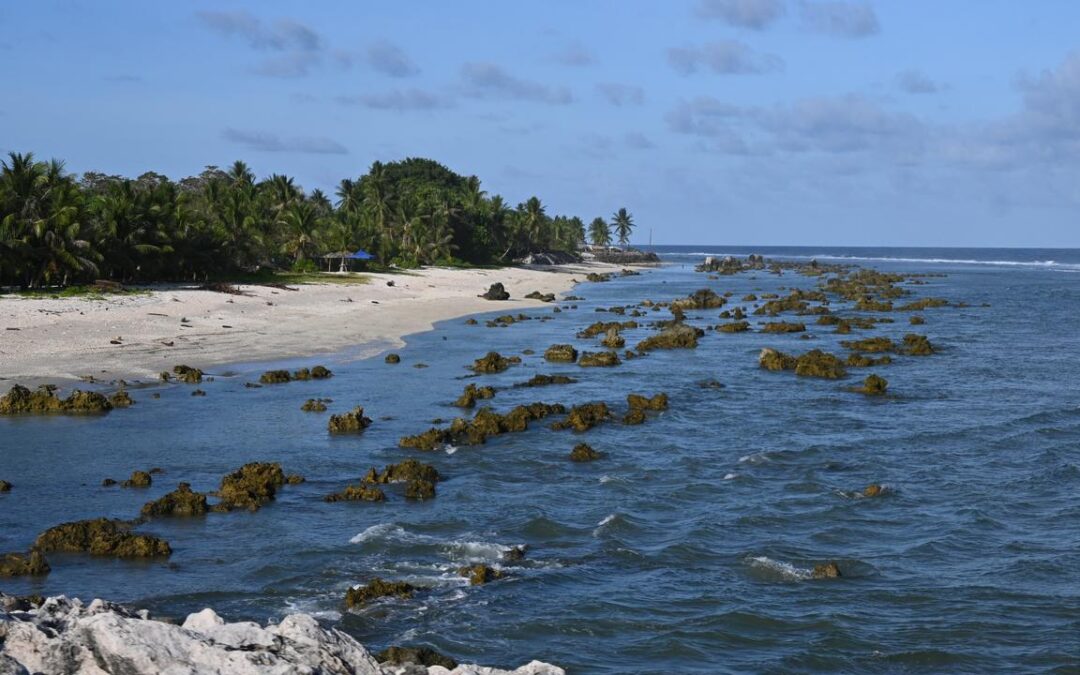
Australia signs $400m deportation deal with Nauru
Australia has signed an agreement with Nauru to deport former detainees without a valid visa to the Pacific Islands nation in a move slammed by refugee advocates.
Home Affairs Minister Tony Burke quietly visited the tiny atoll nation on Friday where he met with President David Adeang, his cabinet and other parliamentarians before signing a memorandum of understanding.
Australia will pay Nauru $408 million up front once the first people arrive and $70 million a year for the resettlement.
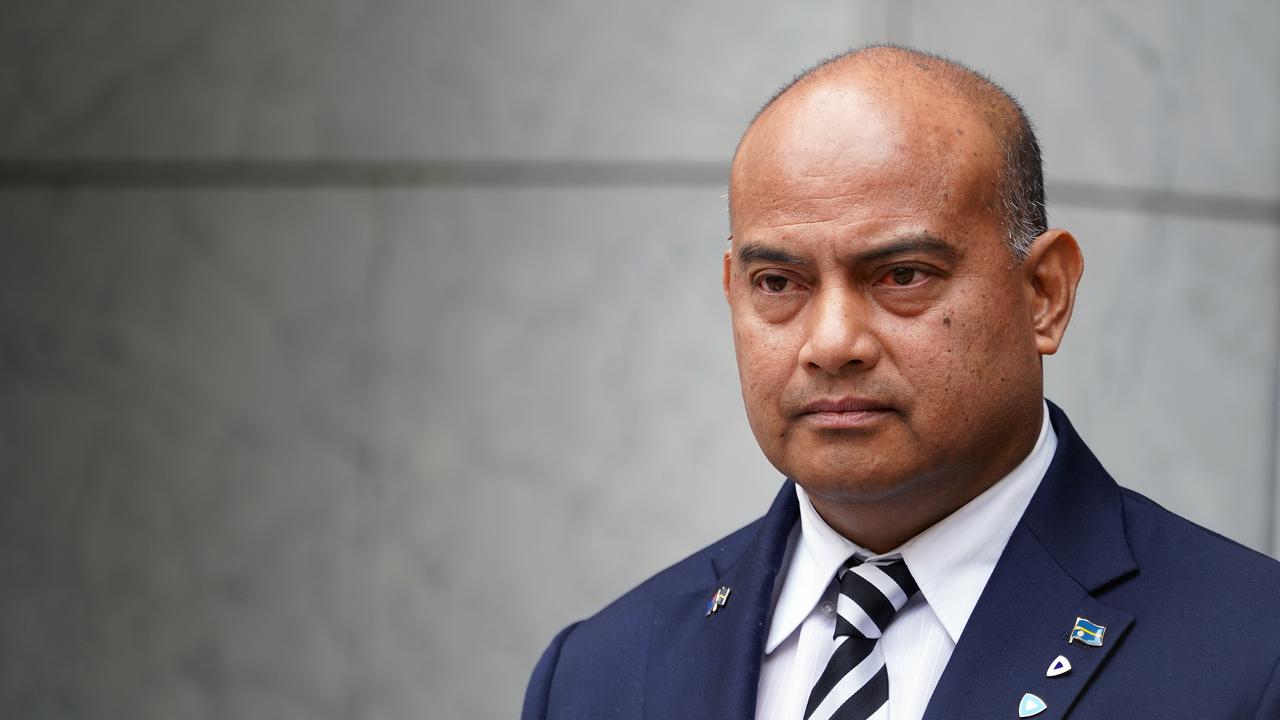
It follows a fraught history as human rights organisations protest the deportation of people to the Micronesian island following a United Nations special rapporteur finding “systematic violations” of the International Convention Against Torture.
The memorandum “contains undertakings for the proper treatment and long-term residence of people who have no legal right to stay in Australia, to be received in Nauru”, according to a statement from Mr Burke.
Nauru will grant long-term visas to the cohort, opening the door to Australia circumventing a High Court ruling that hundreds of immigration detainees couldn’t be held in detention indefinitely if there was no prospect of their removal.
The NZYQ cohort’s release in 2023 caused a political headache for the Labor government after scores were charged with further offences after being released into the community.
Some had serious criminal convictions while others were in immigration detention for visa issues.
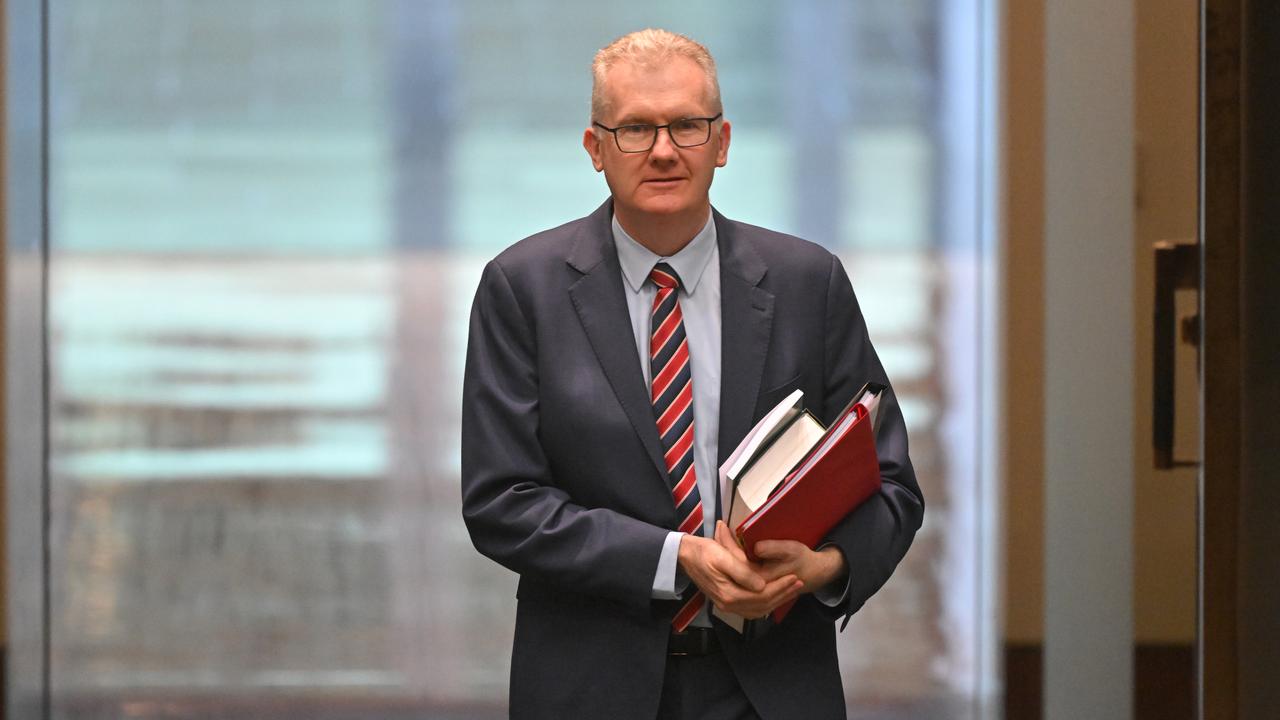
Mr Burke said the memorandum would target the NZYQ cohort.
“Anyone who doesn’t have a valid visa should leave the country,” he said.
“This is a fundamental element of a functioning visa system.”
The Asylum Seeker Resource Centre said the deal opened the door to mass deportations without notice and could affect as many as 80,000 people.
“These secret deals send one clear message – in Australia, some people will be punished simply because of where they were born,” deputy CEO Jana Favero said.
“This deal is discriminatory, disgraceful and dangerous.”
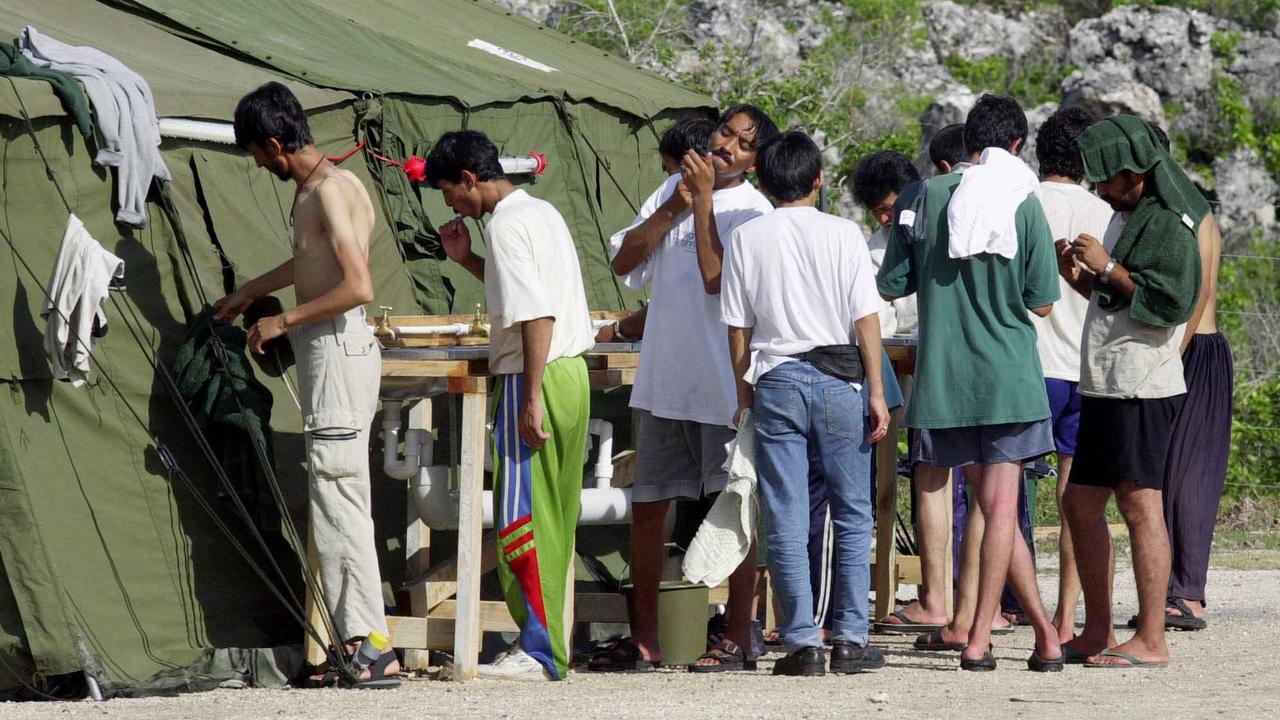
Bethany Rose from the Visa Cancellations Working Group, a coalition of lawyers and academics, said the government was dismantling key legal and accountability protections.
“Like anyone else, these people have served their time and restarted their lives in the communities, recovering after what may be years of indefinite detention,” she said.
“We are talking about people’s lives.”
Mr Burke introduced legislation into the lower house on Tuesday that would bolster the Commonwealth’s power to deport non-citizens to Nauru after a legal challenge halted three people being sent there in February.
If passed, the laws will give the government power to circumvent natural justice principles – under which people have the right to a fair hearing – if there is a third country arrangement a person could be deported under.
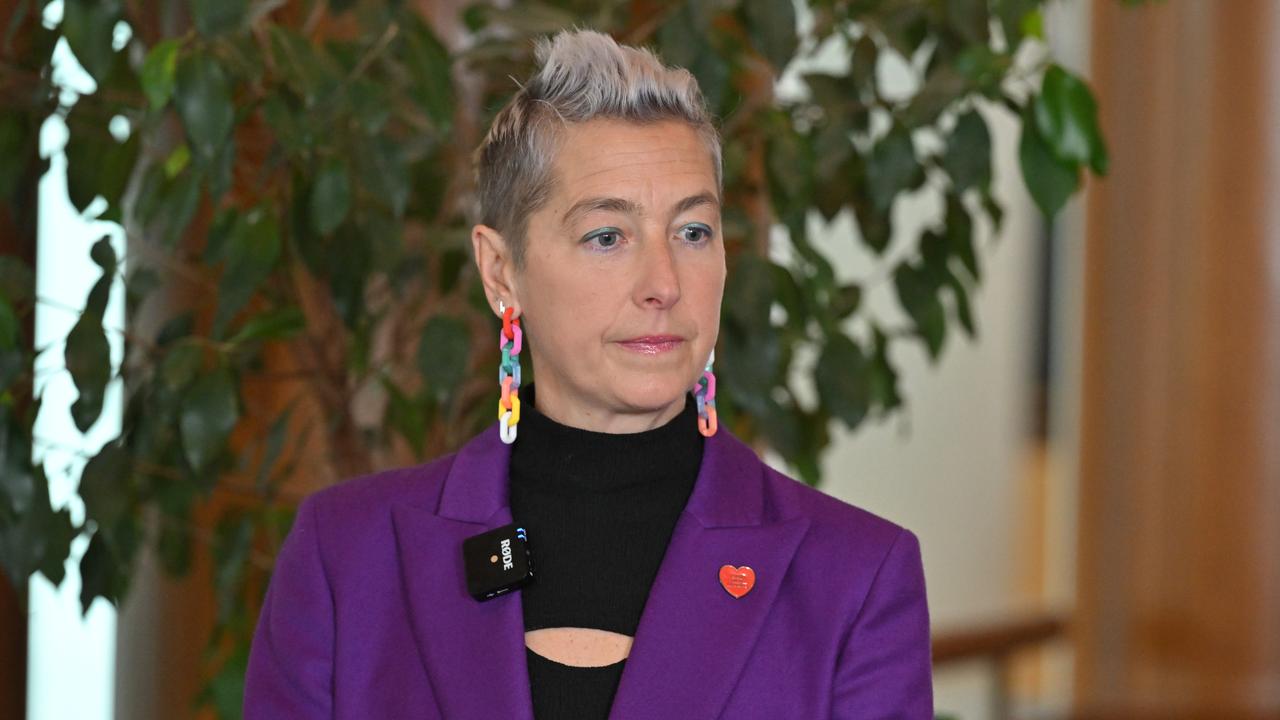
Mr Burke said procedural fairness was “a fundamental principle in many areas of decision-making” but accused non-citizens of using it to frustrate and delay their deportation.
“These amendments do not remove procedural fairness from the processes that support decisions whether to cancel or refuse the grant of a visa, neither do they affect merits review,” he said when introducing the legislation on Tuesday.
“These amendments are largely directed to the final steps in the removal process, where non-citizens who are on a removal pathway have had all claims to remain in Australia considered and rejected.”
The money comes on top of Australia providing Nauru $100 million in budget support and $40 million for policing in exchange for an effective veto of security and critical infrastructure agreements with third countries.

Manhunt for accused cop killer now in its fifth day
The search for a dangerous fugitive accused of killing two police officers has entered its fifth day and remains the priority for authorities amid “many other demands”.
The hunt for accused gunman Dezi Freeman resumed on Saturday with hundreds of police scouring the wilderness of Victoria’s high country amid strong winds and chilly conditions.
Freeman, 56, fled into bushland on Tuesday following a fatal confrontation at a property in Porepunkah, about 300km northeast of Melbourne.
He is accused of killing Detective Leading Senior Constable Neal Thompson, 59, and Senior Constable Vadim De Waart, 35.
Tough conditions have impacted search efforts with thunderstorms, lashings of rain and hail battering the rural town.
Temperatures plunged below 6C in the early hours of Saturday, with wind gusts of more than 60km/h in Porepunkah after blizzard-like conditions.
“The weather certainly doesn’t help but our people are very used to working in inclement conditions,” Chief Commissioner Mike Bush said on Friday.
“It doesn’t help us and I’m sure it doesn’t help the person we’re looking for,” he said.
Snow is predicted down to levels of just 700 metres.
More than 450 police officers have been deployed to Porepunkah as part of the search, which has included examining disused mines, caves and dugouts in and around the rural community.
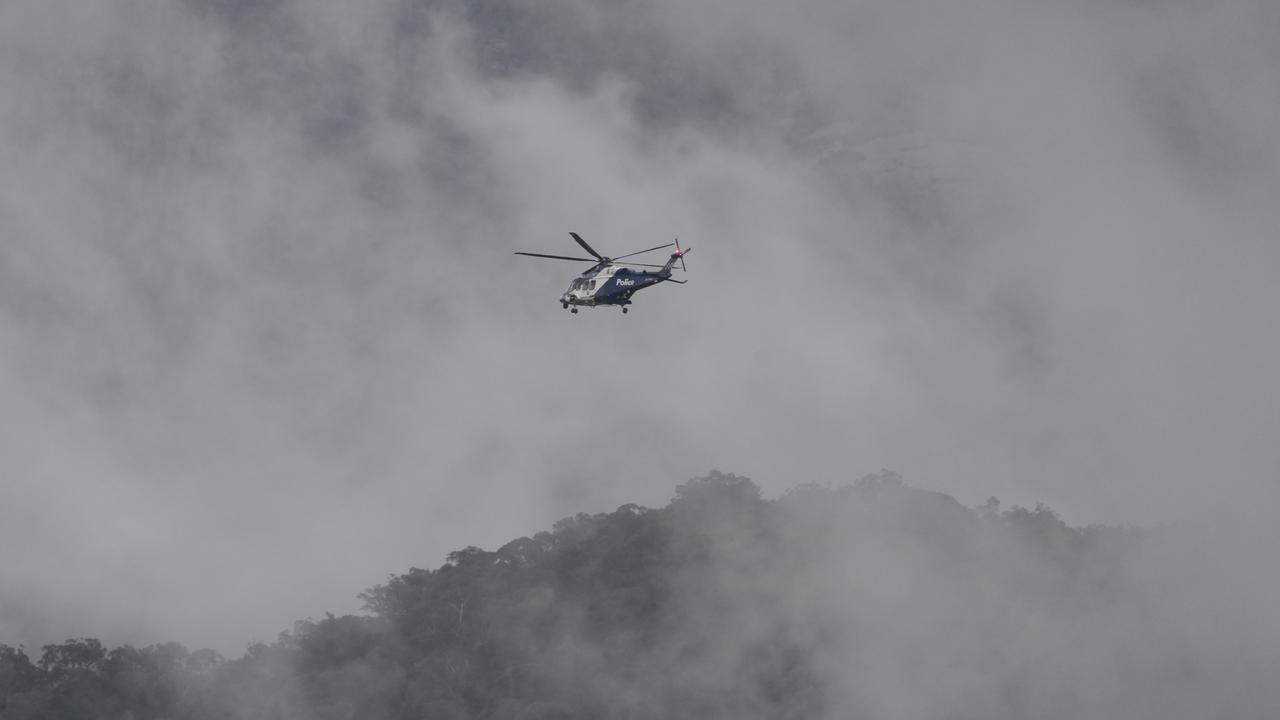
The bid to locate Freeman remains the “number one priority” for police but Mr Bush acknowledged “many other demands”.
“That includes the protest activity this weekend,” he said.
A weekly pro-Palestine march, anti-immigration rallies and counter-demonstrations are planned in Melbourne.
“Our mission there will be to deploy a large resource also to ensure those people out protesting peacefully are kept safe,” Mr Bush said.
Freeman’s 42-year-old wife Mali and 15-year-old son were arrested on Thursday night following an operation at an address in Chandler Court near the town’s centre, before they were interviewed and released.
“There may or may not be charges that follow,” Mr Bush said.
Police helicopters and drones have been circling the area for days in the hope of catching a sign of the fugitive’s whereabouts.

Concerned friend Marlie Thomas said Freeman had become more withdrawn in the days before the fatal shootings.
She attends the local Our Lady of Snows Catholic church – alongside Freeman and his wife – which remains closed.
“We knew he was withdrawing a little bit,” she told AAP.
“We said, ‘we’ve got to keep a closer eye on him’.”
A weekly parkrun event in nearby Bright was cancelled on Saturday after police “recommended this is the best thing to do”, organisers said on social media.
Freeman, who has bush survival experience, was last seen in dark green tracksuit pants, a dark green rain jacket, Blundstone boots and reading glasses, police said.
He is believed to be a sovereign citizen, a follower of an ideology that rejects government authority and the rule of law.

Delta to pay millions after jet dumped fuel on schools
Delta Air Lines has agreed to pay $US79 million ($A121 million) to settle a class-action lawsuit filed in 2020 after one of its aeroplanes that was experiencing engine trouble dumped its fuel over schoolyards and densely populated neighbourhoods near Los Angeles.
The Delta jet had departed from Los Angeles to Shanghai on January 14, 2020, when it needed to quickly return to Los Angeles International Airport.
The Boeing 777-200 landed safely after circling back over Los Angeles while dumping 56.8 thousand litres of fuel to reach a safe landing weight.
Los Angeles County firefighters were called to schools in the city of Cudahy where nearly 60 schoolchildren and teachers were examined for minor skin and lung irritations. None required hospital treatment.
Shortly after, teachers from Park Avenue Elementary School in Cudahy filed a lawsuit against the airline, saying they were exposed to jet fuel that drizzled down like raindrops with “overwhelming” fumes.
They described feeling the fuel on their clothes, skin and eyes.
Later, several Cudahy residents filed a class-action suit.
The teachers said they sought medical treatment after the incident and experienced physical and emotional pain.
Delta said in the lawsuit settlement reached Monday that one of the plane’s two engines lost thrust shortly after takeoff and that the plane, which was carrying enough fuel for the 13-hour flight, exceeded its maximum landing weight by around 72 tonnes.
The weight of a full load of fuel carries a risk of damaging a jetliner during landing — which can be expensive for an airline to fix.
Even if there isn’t damage, airlines try to avoid overweight landings because they are required to inspect planes, which puts them out of service.
The pilots decided to dump fuel “to reduce the serious risks of flying and landing an overweight aeroplane on just one engine,” the airline said in court documents.
Delta said in court documents that it agreed to the settlement without any admission of liability to avoid the legal expenses of a trial and “to eliminate the distraction and other burdens this litigation has caused to Delta’s business”.
Delta did not immediately respond Friday to a request for comment.
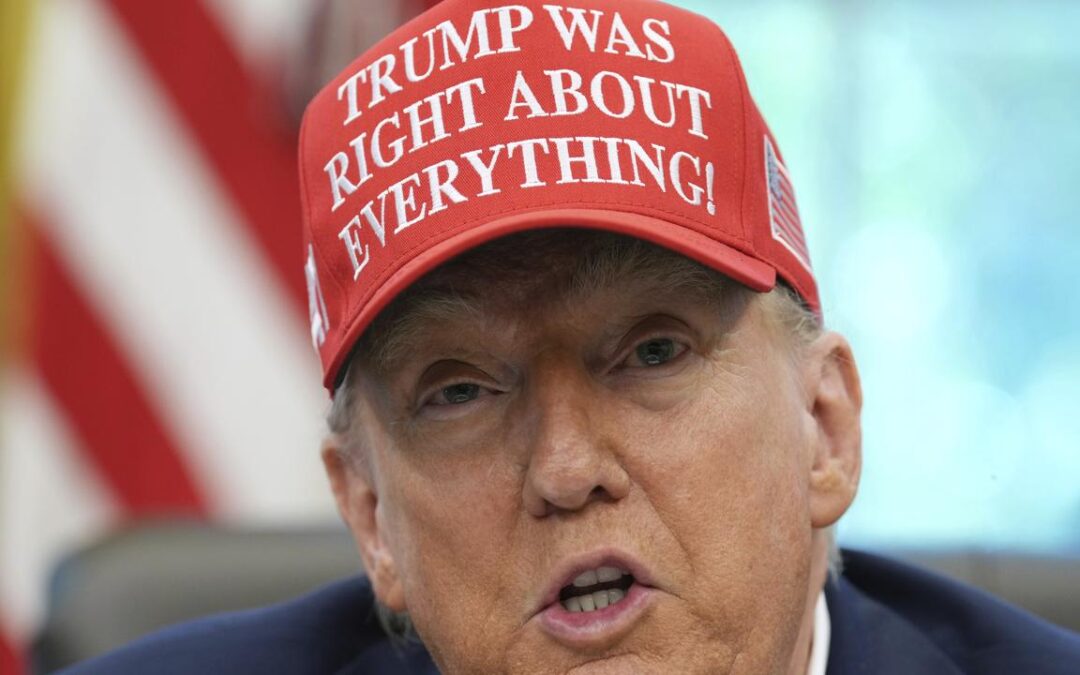
Hearing ends without ruling on ousted Fed governor
A court hearing on President Donald Trump’s attempt to fire Federal Reserve Governor Lisa Cook has ended with no immediate ruling from the judge hearing the unprecedented legal fight, meaning the US central bank policymaker will remain in place for now.
After hearing oral arguments for two hours in a court in Washington, DC, US District Judge Jia Cobb asked Cook’s lawyers to file a brief on Tuesday laying out in more detail their arguments.
The case, which will likely end up before the US Supreme Court, has ramifications for the Fed’s ability to set interest rate policy without regard to politicians’ wishes.
The Fed has said it would abide by any court decision.
It has given no indication that Cook’s status as a member of its board of governors has changed, and she remains listed on its website as an active member of several internal committees.
Concerns about the Fed’s independence from the White House in setting monetary policy could have a ripple effect throughout the global economy.
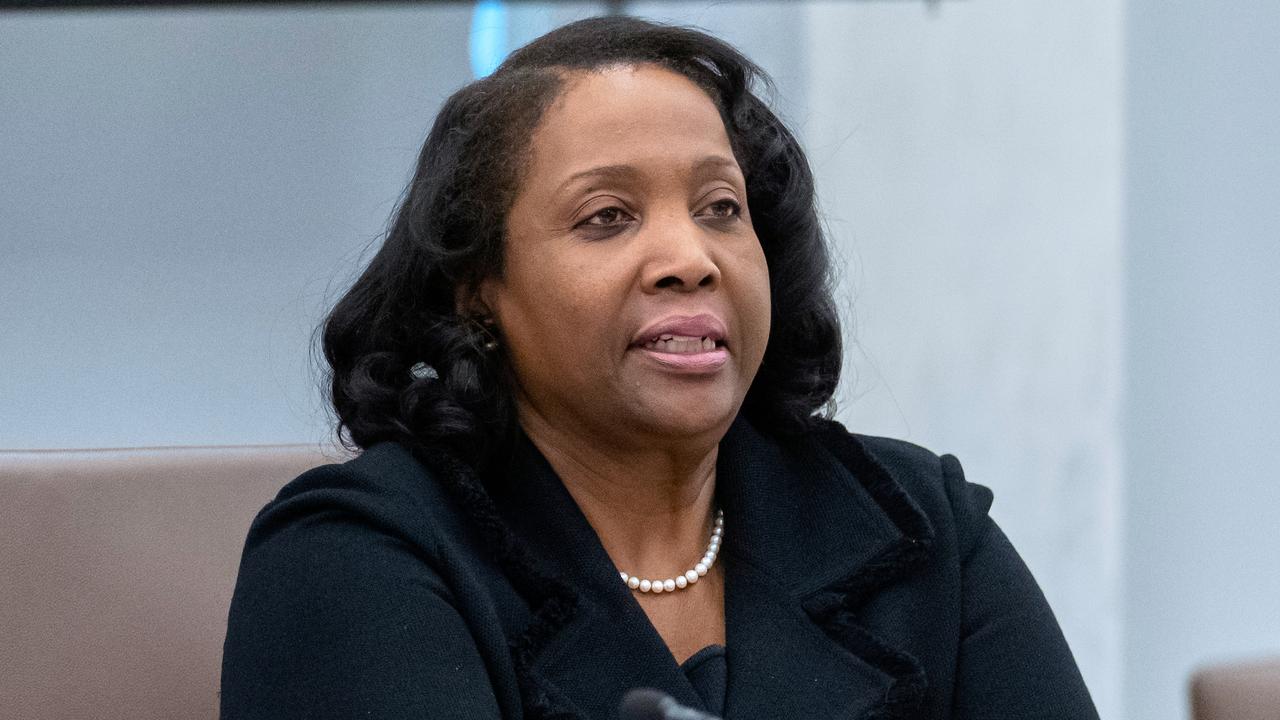
The US dollar stumbled against other major currencies after Trump said he would remove Cook.
Cook sued Trump and the Fed, saying the Republican president’s claim that she engaged in mortgage fraud before she joined the central bank did not give him legal authority to remove her.
She says it was a pretext to fire her for her monetary policy stance.
“Cause for the president means she won’t go along with the interest rate drop,” Cook’s lawyer, prominent Washington attorney Abbe Lowell, said.
Cook has denied committing mortgage fraud, calling the allegations “unsubstantiated and unproven”, but has not explained the basis for that position.
Trump attacked the Fed for not cutting rates during his first term in the White House and resumed that campaign when he returned to power in early 2025.
He has berated Fed Chair Jerome Powell for the central bank’s rate policy and for allegedly mishandling a multibillion-dollar renovation project.
The Fed cut rates three times in 2024, but has held them steady since December out of concern that Trump’s aggressive reshaping of US trade policy could boost inflation.
Cook voted with Powell and the majority of the central bank’s rate-setting committee in all those policy decisions.
The central bank, however, is widely expected to reduce its benchmark interest rate by a quarter of a percentage point from the current 4.25 per cent-4.50 per cent range at its September 16-17 policy meeting.
The law that created the Fed says governors may be removed only “for cause,” but does not define the term nor establish procedures for removal.
No president has ever removed a Fed governor, and the law has never been tested in court.
Trump says Cook described separate properties in Michigan and Georgia as primary residences on mortgage applications in 2021, which could have allowed her to obtain lower interest rates.
Cook has said that even if the allegations were true, it would not be grounds for removal because the alleged conduct occurred before she was confirmed by the US Senate and took office in 2022.
Trump administration lawyers argued in a court filing on Friday that alleged mortgage fraud is sufficient cause to remove a Fed governor, regardless of when it happened.
Cook has countered that federal laws limiting the president’s ability to remove officials from other agencies define cause as negligence, malfeasance or inefficiency that occurs when an official is in office, and the same standard should apply to the Fed.
The Supreme Court’s conservative majority has tentatively allowed Trump to fire officials from other agencies.
In an order issued in May, the court distinguished the Fed from those agencies, citing its unique structure and “distinct historical tradition”.
Cook’s departure would allow Trump to name his fourth pick to the Fed’s seven-member board.
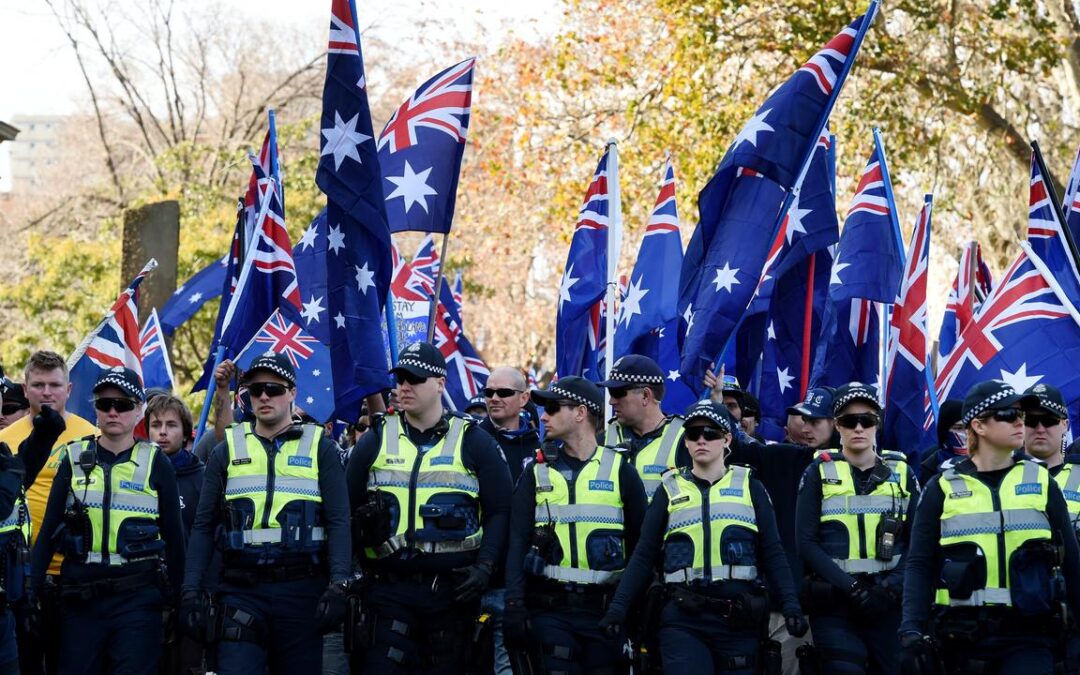
‘Dangerous’ threat to emerge from anti-migrant rallies
Potential clashes between anti-racism and anti-immigration rallies could lead to an escalation of violence that tears at the fabric of Australian society, a terrorism expert warns.
The nation’s leaders have rushed to condemn protests linked to white-nationalist extremists, planned for capital cities on Sunday.
March for Australia, the group behind the rallies, said the gatherings would demand the federal government end “mass migration”.
Michael Zekulin, a terrorism researcher at the Australian National University, said violence could erupt if people started identifying with one group at the expense of others in the community.
“This is where things can become potentially dangerous when you have individuals who are sort of espousing or blaming other groups for the problems of their group,” he told AAP.
“If that starts to get out of hand, if there are confrontations, that can sort of feed into larger things as they pick up more momentum.”

Anti-racism marches will also be taking place at the same time in Sydney and Melbourne that could see the rival groups come head-to-head.
NSW Police will be sending up to 1000 officers to patrol parts of the inner-city, while Victoria Police will declare the Melbourne CBD a designated area, allowing people to be searched for weapons and be asked to remove face coverings.
Dr Zekulin said social media had played a role in encouraging copy-cat behaviour among extremist groups.
“It’s very clear that these individuals travel in the same circles on the internet,” he said.
“They see each other, they see what other groups who have similar beliefs to them are doing, and then they will try to imitate or mimic that.”
Indian migrant workers have expressed fears they will be targeted by protesters at the anti-migration rallies.
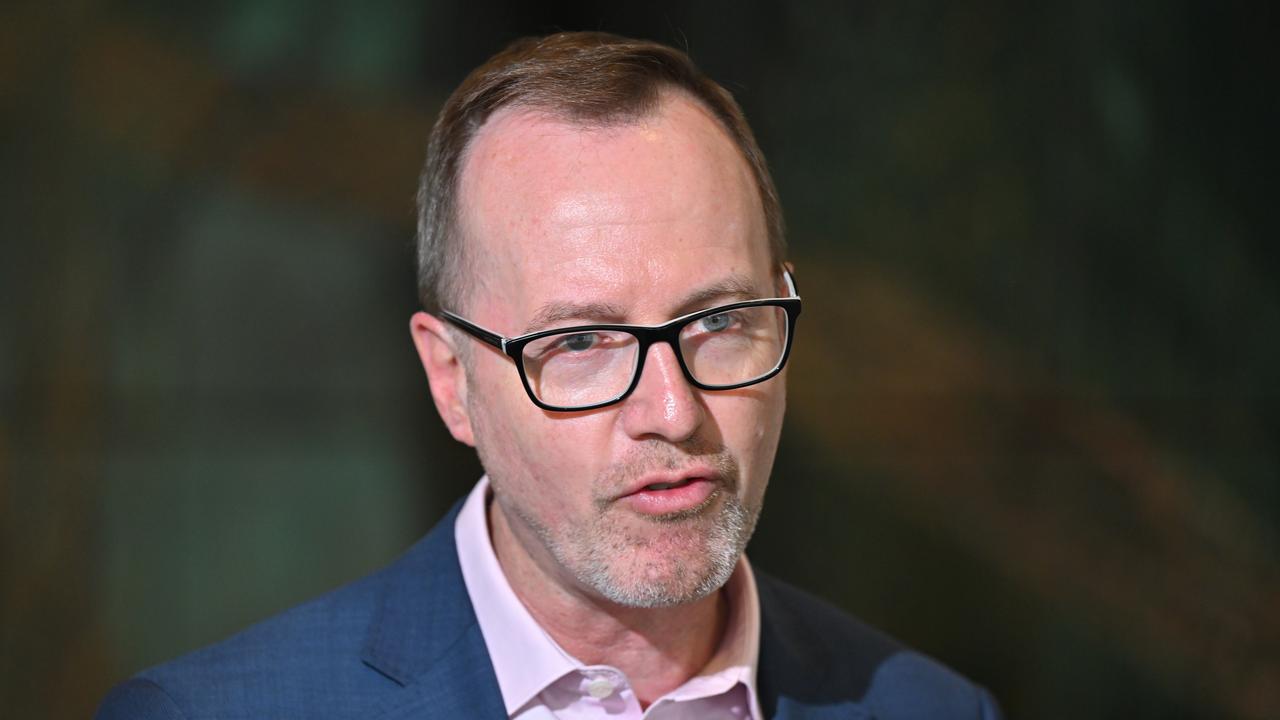
The Albanese government has declared there is no place for hate in Australia.
While the coalition has called for unity and respect for diverse communities, hitting out at reports particular non-white ethnic groups might be targeted.
Greens Immigration spokesperson David Shoebridge said anti-migrant rhetoric inside parliament house and in the media had fed into extremist views.
“We are in solidarity with every community that is targeted and concerned by these hateful rallies,” he said.

Accused cop killer on the loose in blizzard conditions
A dangerous fugitive accused of killing two police officers remains at large as 115km/h winds and bitterly cold blizzard conditions impact search efforts.
The hunt for accused gunman Dezi Freeman will resume on Saturday as hundreds of police officers continue to scour the wilderness of Victoria’s high country.
Freeman, 56, has been on the run since Tuesday when he fled into bushland following a fatal confrontation at a property in Porepunkah, about 300km northeast of Melbourne.
He is accused of killing Detective Leading Senior Constable Neal Thompson, 59, and Senior Constable Vadim De Waart, 35.
Tough conditions have impacted search efforts with thunderstorms, lashings of rain and hail battering the rural town.
Temperatures were predicted to plunge as low as 5C in the early hours of Saturday morning.
Damaging winds, blizzard-like conditions and snow were predicted down to levels of just 700 metres.
The rain is set to ease by daybreak and officers will resume scouring mines, caves and dugouts in and around the small rural town.
Victoria Police Chief Commissioner Mike Bush said more than 450 police officers have been deployed to Porepunkah as part of the search.
Freeman’s 42-year-old wife Mali and 15-year-old son were arrested on Thursday night following an operation at an address in Chandler Court near the town’s centre, before they were interviewed and released.
“There may or may not be charges that follow,” Mr Bush said.

Police helicopters and drones have been circling the area for days in the hope of catching a sign of the fugitive’s whereabouts.
Concerned friend Marlie Thomas said Freeman had become more withdrawn in the days before the fatal shootings.
She attends the local Our Lady of Snows Catholic church – alongside Freeman and his wife – which will remain closed this weekend.
“We knew he was withdrawing a little bit,” she told AAP.
“We said, ‘we’ve got to keep a closer eye on him’.”
Freeman, who has bush survival experience, was last seen wearing dark green tracksuit pants, a dark green rain jacket, brown Blundstone boots and reading glasses, police said.
He is believed to be a sovereign citizen, an ideology that rejects government authority and whose followers believe the rule of law doesn’t apply to them, and who disassociate from society.